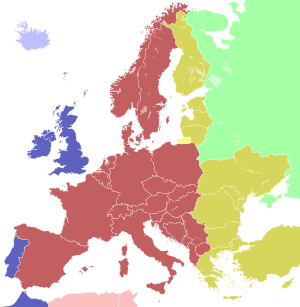UTC±00:00
|
| |||||||||||||||||||||||||||||||||||||||||||||||||||||||||||||||||||||||||||||||||||||||||||||||||||||||||||||||||||||||||||||||||||||||||||||||||||||||||||||||||||||||||||||||||||||||||||||||||||||||||||||||||||||||||||||||||||||||||||||||||||||||||||||||||||||||||||||||||||||||||||||||||||||||||||||||||||||||||||||||||||||||||||||||||||||||||||||||||||||||||||||||||||||||||||||||||||||||||||||||||||||||||||||||||||||||||||||||||||||||||||||||||||||||||||||||||||||||||||||||||||||||||||||||||||||||||||||||||||||||||||||||||||||||||||||||||
| Meridians | |||||||||||||||||||||||||||||||||||||||||||||||||||||||||||||||||||||||||||||||||||||||||||||||||||||||||||||||||||||||||||||||||||||||||||||||||||||||||||||||||||||||||||||||||||||||||||||||||||||||||||||||||||||||||||||||||||||||||||||||||||||||||||||||||||||||||||||||||||||||||||||||||||||||||||||||||||||||||||||||||||||||||||||||||||||||||||||||||||||||||||||||||||||||||||||||||||||||||||||||||||||||||||||||||||||||||||||||||||||||||||||||||||||||||||||||||||||||||||||||||||||||||||||||||||||||||||||||||||||||||||||||||||||||||||||||||
|---|---|---|---|---|---|---|---|---|---|---|---|---|---|---|---|---|---|---|---|---|---|---|---|---|---|---|---|---|---|---|---|---|---|---|---|---|---|---|---|---|---|---|---|---|---|---|---|---|---|---|---|---|---|---|---|---|---|---|---|---|---|---|---|---|---|---|---|---|---|---|---|---|---|---|---|---|---|---|---|---|---|---|---|---|---|---|---|---|---|---|---|---|---|---|---|---|---|---|---|---|---|---|---|---|---|---|---|---|---|---|---|---|---|---|---|---|---|---|---|---|---|---|---|---|---|---|---|---|---|---|---|---|---|---|---|---|---|---|---|---|---|---|---|---|---|---|---|---|---|---|---|---|---|---|---|---|---|---|---|---|---|---|---|---|---|---|---|---|---|---|---|---|---|---|---|---|---|---|---|---|---|---|---|---|---|---|---|---|---|---|---|---|---|---|---|---|---|---|---|---|---|---|---|---|---|---|---|---|---|---|---|---|---|---|---|---|---|---|---|---|---|---|---|---|---|---|---|---|---|---|---|---|---|---|---|---|---|---|---|---|---|---|---|---|---|---|---|---|---|---|---|---|---|---|---|---|---|---|---|---|---|---|---|---|---|---|---|---|---|---|---|---|---|---|---|---|---|---|---|---|---|---|---|---|---|---|---|---|---|---|---|---|---|---|---|---|---|---|---|---|---|---|---|---|---|---|---|---|---|---|---|---|---|---|---|---|---|---|---|---|---|---|---|---|---|---|---|---|---|---|---|---|---|---|---|---|---|---|---|---|---|---|---|---|---|---|---|---|---|---|---|---|---|---|---|---|---|---|---|---|---|---|---|---|---|---|---|---|---|---|---|---|---|---|---|---|---|---|---|---|---|---|---|---|---|---|---|---|---|---|---|---|---|---|---|---|---|---|---|---|---|---|---|---|---|---|---|---|---|---|---|---|---|---|---|---|---|---|---|---|---|---|---|---|---|---|---|---|---|---|---|---|---|---|---|---|---|---|---|---|---|---|---|---|---|---|---|---|---|---|---|---|---|---|---|---|---|---|---|---|---|---|---|---|---|---|---|---|---|---|---|---|---|---|---|---|---|---|---|---|---|---|---|---|---|---|---|---|---|---|---|---|---|---|---|---|---|---|---|---|---|---|---|---|---|---|---|---|---|---|---|---|---|---|---|---|---|---|---|---|---|---|---|---|---|---|---|---|---|---|---|---|---|---|---|---|---|---|---|---|---|---|---|---|---|
| Central | 0 degrees | ||||||||||||||||||||||||||||||||||||||||||||||||||||||||||||||||||||||||||||||||||||||||||||||||||||||||||||||||||||||||||||||||||||||||||||||||||||||||||||||||||||||||||||||||||||||||||||||||||||||||||||||||||||||||||||||||||||||||||||||||||||||||||||||||||||||||||||||||||||||||||||||||||||||||||||||||||||||||||||||||||||||||||||||||||||||||||||||||||||||||||||||||||||||||||||||||||||||||||||||||||||||||||||||||||||||||||||||||||||||||||||||||||||||||||||||||||||||||||||||||||||||||||||||||||||||||||||||||||||||||||||||||||||||||||||||||
| Other | |||||||||||||||||||||||||||||||||||||||||||||||||||||||||||||||||||||||||||||||||||||||||||||||||||||||||||||||||||||||||||||||||||||||||||||||||||||||||||||||||||||||||||||||||||||||||||||||||||||||||||||||||||||||||||||||||||||||||||||||||||||||||||||||||||||||||||||||||||||||||||||||||||||||||||||||||||||||||||||||||||||||||||||||||||||||||||||||||||||||||||||||||||||||||||||||||||||||||||||||||||||||||||||||||||||||||||||||||||||||||||||||||||||||||||||||||||||||||||||||||||||||||||||||||||||||||||||||||||||||||||||||||||||||||||||||||
| Date-time group (DTG) | Z | ||||||||||||||||||||||||||||||||||||||||||||||||||||||||||||||||||||||||||||||||||||||||||||||||||||||||||||||||||||||||||||||||||||||||||||||||||||||||||||||||||||||||||||||||||||||||||||||||||||||||||||||||||||||||||||||||||||||||||||||||||||||||||||||||||||||||||||||||||||||||||||||||||||||||||||||||||||||||||||||||||||||||||||||||||||||||||||||||||||||||||||||||||||||||||||||||||||||||||||||||||||||||||||||||||||||||||||||||||||||||||||||||||||||||||||||||||||||||||||||||||||||||||||||||||||||||||||||||||||||||||||||||||||||||||||||||
| External links | |||||||||||||||||||||||||||||||||||||||||||||||||||||||||||||||||||||||||||||||||||||||||||||||||||||||||||||||||||||||||||||||||||||||||||||||||||||||||||||||||||||||||||||||||||||||||||||||||||||||||||||||||||||||||||||||||||||||||||||||||||||||||||||||||||||||||||||||||||||||||||||||||||||||||||||||||||||||||||||||||||||||||||||||||||||||||||||||||||||||||||||||||||||||||||||||||||||||||||||||||||||||||||||||||||||||||||||||||||||||||||||||||||||||||||||||||||||||||||||||||||||||||||||||||||||||||||||||||||||||||||||||||||||||||||||||||

UTC - 2010: Blue (January), Orange (July), Yellow (all year round), Light Blue - Sea areas

Time zones of Europe:
Light colours indicate countries that do not observe summer time: Algeria, Belarus, Iceland, Russia, Tunisia.
| light blue | Western European Time (UTC+0) |
| blue | Western European Time (UTC+0) Western European Summer Time (UTC+01:00) |
| pink | Central European Time (UTC+01:00) |
| red | Central European Time (UTC+01:00) Central European Summer Time (UTC+02:00) |
| yellow | Kaliningrad Time (UTC+02:00) |
| golden | Eastern European Time (UTC+02:00) Eastern European Summer Time (UTC+03:00) |
| light green | Minsk Time, Moscow Time (UTC+03:00) |

Time zones of Africa:
Striped colours indicate countries observing daylight saving time. Outside Africa the zones may have other names and summer time rules not indicated in this figure.
| UTC−01:00 | Cape Verde Time (The islands of Cape Verde are to the west of the African mainland.) | |
| UTC±00:00 | Western European Time · Greenwich Mean Time | |
| UTC+01:00 | Central European Time · West Africa Time · Western European Summer Time. | |
| UTC+02:00 | Central Africa Time · Eastern European Time · South African Standard Time · West Africa Summer Time | |
| UTC+03:00 | East Africa Time | |
| UTC+04:00 | Mauritius Time · Seychelles Time |
UTC±00:00 is the following time:
- Coordinated Universal Time (UTC), the basis for the world's civil time.
- Western European Time (Ireland, Portugal and UK).
Western European Time (Northern Hemisphere winter only)
Main article: Western European Time
- Europe
- Alderney
- Canary Islands; observes European Union DST rules
- Faroe Islands
- Guernsey
- Herm
- Ireland
- Isle of Man
- Jersey
- Portugal (with the exception of the Azores, which use UTC−01 with DST)
- Sark
- United Kingdom (GMT / BST)
- Africa
Notes:
- The westernmost point where UTC with DST is applied is El Hierro, Canary Islands, Spain (18°00' W). Time used there is 2 hours and 12 minutes ahead of physical time in the summer, making for the greatest discrepancy in the UTC time zone.
- The easternmost settlement where UTC with DST is applied is Lowestoft in Suffolk, East Anglia, England (at just 1°45' E).
- Note that Ireland[1] uses the term "standard time"[2] in reference to the summer months and "winter time" during what the rest of the time zone calls "standard time". This is the reverse of the practice of most countries in the EU, but provides the same end results.
Summer Time (Northern Hemisphere summer only)
- Greenland - an eastern region around Ittoqqortoormiit (Scoresbysund)
- Portugal - the Azores only
As standard time (all year round)
The following is a list of places that use UTC as their standard time and do not observe Daylight saving time:
West Africa
- Burkina Faso
- Côte d'Ivoire
- The Gambia
- Ghana
- Guinea
- Guinea-Bissau
- Liberia
- Mali
- Mauritania
- São Tomé and Príncipe
- Senegal
- Sierra Leone
- Togo
- Western Sahara
Atlantic Islands
- Greenland
- northeastern
- Danmarkshavn and surrounding area
- northeastern
- Iceland
- Saint Helena, Ascension Island and Tristan da Cunha (to UK)
Antarctica
- Some bases in Antarctica. See also Time in Antarctica
Notes
- The westernmost point where UTC with no DST is applied is Bjargtangar, at the northwest peninsula of Iceland (24°32' W). Time used there is 1 hour and 38 minutes ahead of physical time. This is the greatest deviation from physical time for UTC with no DST.
- The easternmost locale where UTC with no DST is applied is Bouvet Island, of Norwegian jurisdiction, at the South Atlantic Ocean (3°24' E).
| ||||||||||||||||||||||||||||||||
References
- ↑ Standard Time (Amendment) Act, 1971 – Schedule 1 Irish Statute Book
- ↑ "STANDARD TIME ACT, 1968". Office of the Attorney General, Ireland. Retrieved 29 June 2012.
